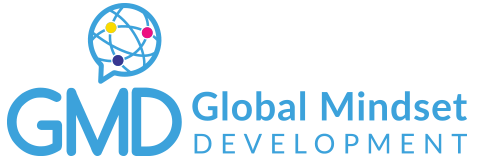Diversity and inclusion: 5 things you should know
Nowadays, diversity and inclusion are ubiquitous terms in the business world. If companies want to gain a competitive advantage through diversity, they have to know the right initiatives to ensure that their employees make up a talented workforce. But first of all, they have to understand what diversity is. They also have to realize what cultural and social issues can come out from managing differences. And the potential they can release if effectively managed. We have collected five main questions during a webinar in collaboration with JCI Malta to which it is essential to give an answer.
1. What is diversity?
The word diversity comes from the latin divertere which means “to turn in different directions”. A company has to work on and with multiple dimensions. Often the brand focuses the attention only on the final consumer. The company forgets the fundamental role that employees have. Indeed, its consideration must be distributed in various directions, externally and internally. On one hand, externally, the marketplace needs multifaceted attention to different cultures, ideas and philosophies. On the other, internally, employees may differ in age, gender, social status, religion, and ethnicity. The internal diversity can be a competitive advantage that enables the company to reach, externally, new markets. Moreover, promoting individuality and personal contributions could be a way to obtain some new innovative solutions.
When we talk about managing diversity we consider different fields from training or communication to business and information. It’s true that nowadays workplaces need to be both diverse and inclusive. The two ideas are actually quite different even if they are often lumped together. Diversity is more about the numbers, it is about increasing minority representation. Inclusion is the celebration of diversity, it is about the process and the feeling. It’s important for a company to guarantee the respect among the members of the organisation and, in the same way, to value their diversity potential. The company has to meet the needs of its employees and therefore create an inclusive environment. Having fair and transparent employment practices and strategies is useful to manage diversity effectively.
2. Why is inclusion important?
Promoting inclusion is the best way to manage diversity , avoiding the ghetto effect . W orking in an inclusive environment means working in a place where “every head counts”, valuing differences without erasing them. Your efforts should be aimed at developing strategies and tools to value the differences. Like that, you will have more chances to obtain a harmonious workplace, where different perspectives and values can help production to grow up faster. When you don’t manage diversity properly, there could be the risk of dividing people in ingroup (the majority ) and outgroup (the minority). This will increase inequality, competition and discrimination .
3. How does it benefit companies & employees?
The global market is constantly changing. The best way to gain a competitive advantage is by diversifying the workforce in companies and organisations. Attracting diverse professionals creates additional value for the organisation and drives innovation; every person can contribute with different, creative and new ideas and solutions, increasing the team’s problem-solving skill.
Employees with different backgrounds and experiences can bring together a variety of perspectives. This increases productivity and delivers better results. Diversity and inclusion will also help to enhance the image and reputation of the brand and to attract talented professionals and the young generations. Creating a safe space for employees improves their performance and engagement and increases retention.
4. What are the common mistakes that companies make when embarking on a diversity program?
When we talk about diversity programs in companies, the first big mistake is to not consider the diversity inside a team, ignoring their cultural, gender, generational diversity and the intersectionality among them. In this scenario, a team may not be able to understand the reasons for some conflicts, and the workplace could become toxic. So the first step should be assessing and acknowledging the diversity already existent inside the organisation. Following that, diversity programs should not be considered only as an HR function. They should be part of the whole company strategy, supported and promoted by the CEO and the managers to be really effective.
Also D&I programs shouldn’t be viewed as a duty and managers and employees shouldn’t be forced to implement them. They should be helped to recognise the need for it and so to make it as effective as possible. Thinking that each team need the same diversity and inclusion program would also be a big mistake. If on one side the D&I program needs to have top-down support, on the other side it should start by the need of each team that has different cultures and internal dynamics. A diversity’s assessment is the first step to understand specific needs and develop a tailor-made program.
5. What are some best practices to create an inclusive corporate culture?
To make your workplace more inclusive, there are some tips that you may want to consider.
- Be aware, understand, and respect other people’s point of view. This may appear as altruism, but it is an important way to make the workplace and your attitude more inclusive.
- Engage your employees or teammates and be always fair and transparent with them. You can also think about nominating a diversity ambassador who will be responsible for listening and assessing the team’s needs, improving communication and developing activities and solutions.
- Join a training program, this will help you to be more prepared and to understand how to develop an effective D&I program.
Diversity is all around us and we interact with different cultures every day. Recognising the complexity and understanding and valuing diversity will help us to promote inclusive workplaces and societies overcoming prejudices and stereotypes. To change the world we have to start from ourselves. Watch this short video and play a little game with us to challenge yourself and your vision. And enjoy the worlds around you!


